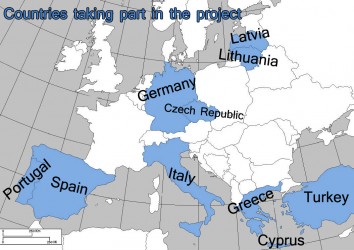This day we visited several “magic” places in Kutna Hora. We’ve learned that Kutna Hora began in 1142. It developed as a result of exploitation of the silver mines. In the 14th century it became a royal city endowed with monuments that symbolized its prosperity, the town became the cultural, political and economic centre of Bohemia, competing for importance, even with Prague. In Kutna Hora Prague groschen were minted until 1547. The last working silver mint was abandoned in the 18th century.
One of the “magic” places visited in Kutna Hora is Kostnice (Ossuary) or the Bone Church. It is that in the 13th century, Jindrich, the abbot of Sedlec monastery, returned from a visit to Palestine with a pocketful of soil and sprinkled it on the cemetery surrounding the Chapel of All Saints. This direct association with the holy land led to the graveyard becoming a sought after burial site among the aristocracy of Central Europe. At the time of the thirty years’ war in the 17th century, the number of burials outgrew the space available, the older remains began to be exhumed and stored in the chapel, and it’s estimated that the chapel now contains the bones of up to 40 000 people.
The other “magic” place visited that day in Kutna Hora was St. Barbara’s Cathedral which is the most spectacular Gothic cathedral in the Czech Republic. In the late 1300’s St. Barbara’s was founded by the rich mine owners of Kutna Hora in an attempt to further their religious independence from Cistercian monastery at Sedlec and compete with the grandeur of Prague’s St. Vitus cathedral. St. Barbara is the patron saint of miners, and many of the interior adornments reflect mining life. And one more place visited in Kutna Hora was the Italian Court or Vlassky Dvur which was originally built as a fortified castle to watch over the important trade route connecting the capitals of Bohemia and Moravia: Prague and Olomouc.
This slideshow requires JavaScript.






